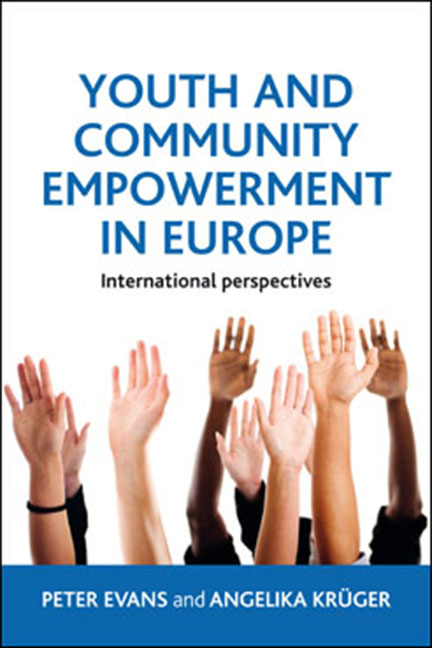Book contents
- Frontmatter
- Dedication
- Contents
- List of figures and tables
- List of abbreviations
- Acknowledgements
- Preface
- Background to the Youth Empowerment Partnership Programme
- one Introduction: the theoretical context of the YEPP approach
- two YEPP I: implementation
- three YEPP I: key changes in YEPP Local Programme Sites
- four YEPP I: meeting the goals
- five YEPP II: learning from YEPP I
- six YEPP II: portraits and overall programme outcomes
- seven YEPP I and II: conclusions and policy implications
- Epilogue: The future of YEPP
- References
- Index
one - Introduction: the theoretical context of the YEPP approach
Published online by Cambridge University Press: 07 September 2022
- Frontmatter
- Dedication
- Contents
- List of figures and tables
- List of abbreviations
- Acknowledgements
- Preface
- Background to the Youth Empowerment Partnership Programme
- one Introduction: the theoretical context of the YEPP approach
- two YEPP I: implementation
- three YEPP I: key changes in YEPP Local Programme Sites
- four YEPP I: meeting the goals
- five YEPP II: learning from YEPP I
- six YEPP II: portraits and overall programme outcomes
- seven YEPP I and II: conclusions and policy implications
- Epilogue: The future of YEPP
- References
- Index
Summary
The Youth Empowerment Partnership Programme (YEPP) supports young people and the communities in which they live by increasing their self-organising and self-determining capabilities through a process of individual and local empowerment brought about through the creation of partnerships. The thinking lying behind YEPP depends on two major movements – the community development approach and community education. A very brief overview of these two movements is provided in the following paragraphs, based on Bleckmann and Krüger (2007).
The community development approach
The community development approach is a participatory and people-empowering model, aimed at increasing peoples’ capacity to influence the conditions which affect their lives. It has been developed as a response to the widespread problems of disempowerment and social exclusion that are characteristic of modern societies. The approach is dedicated to improving local conditions, especially for people living in disadvantaged contexts; it introduces a shift of paradigm by redefining the community and the role it plays in shaping its own conditions and environment and in determining change. The goal is to regenerate community and re-establish active citizenship. As a professional practice of working and learning together with local individuals and groups, this approach supports and encourages people to become active agents or protagonists, rather than passive recipients of developments and change.
While the community development approach has a long history going back to the 19th century (for instance, Owen, 1813), more recently it has seen a resurgence of interest in many countries. In the US and the UK, for instance, ‘community organising’ re-emerged in the 1980s. It has been defined as a values-based process by which people – most often low-and moderate-income people previously with no access to decision-making processes – are brought together in civil society organisations or spontaneous informal action groups to act jointly in the interest of their communities and the common good. Ideally, in the participatory process of working for needed change, citizens who are involved in community-organising groups learn how to take greater responsibility for the future of their communities, make their voices heard and achieve growth as individuals.
- Type
- Chapter
- Information
- Youth and Community Empowerment in EuropeInternational Perspectives, pp. 1 - 12Publisher: Bristol University PressPrint publication year: 2012



